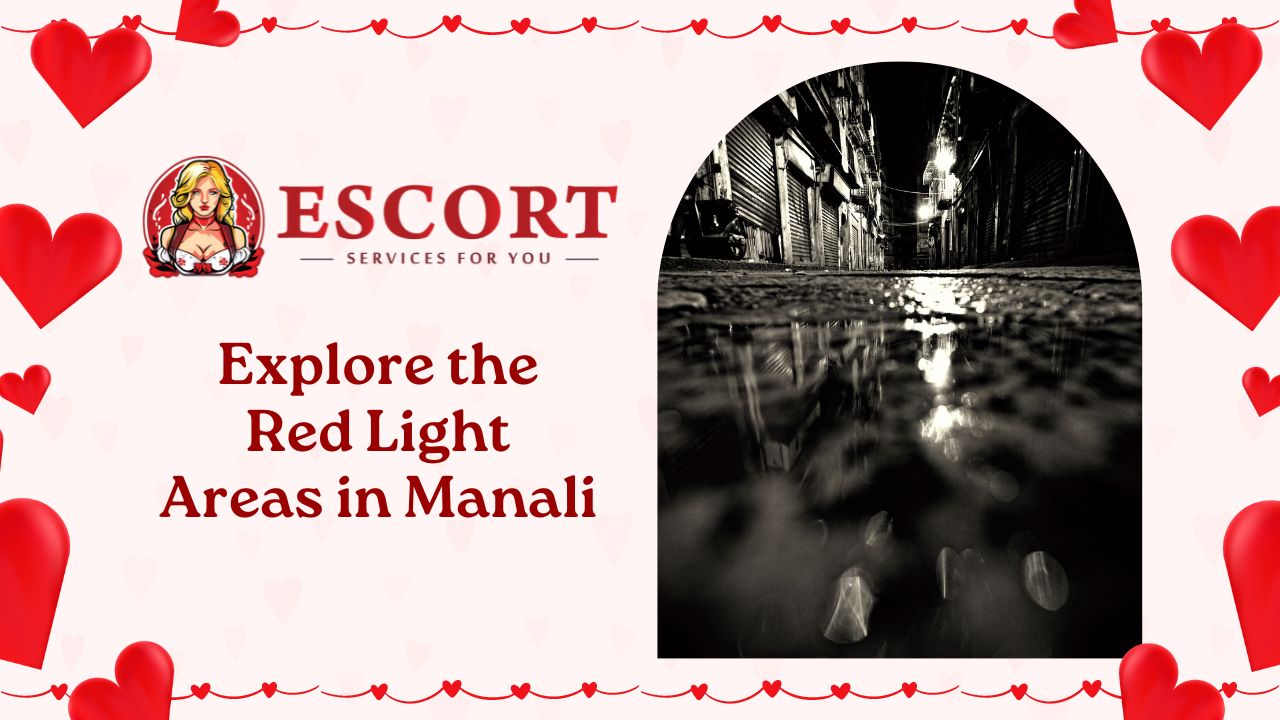Introduction to Red Light Areas in Manali
Nestled in the picturesque mountains of Manali lies a hidden world that often goes unnoticed by many visitors. The Red Light Areas of Manali have a story to tell, one that is both complex and controversial. Join us on a journey as we delve into the history, myths, safety tips, and ways to support the women who are part of this intriguing community. Let’s explore beyond the surface and uncover the truths behind these enigmatic spaces in Manali!
The History and Evolution of Red Light Areas
As we delve into the history and evolution of red light areas in Manali, it’s essential to understand the complex layers that have shaped these spaces over time. These areas didn’t just pop up overnight; they have a rich backstory intertwined with societal norms, economic factors, and cultural dynamics.
The origins of red light districts can be traced back centuries ago, where marginalized communities found themselves pushed to the fringes of society. Over time, these spaces evolved into hubs for commercial sex work, attracting both curiosity and controversy.
Throughout history, red light areas have adapted to changing landscapes – from being underground operations to more visible establishments today. Despite facing stigma and legal challenges, these areas continue to exist as a stark reflection of societal realities.
Exploring the evolution of red light districts opens up a dialogue on issues such as human rights, gender equality, and social justice. It’s crucial to approach this topic with sensitivity and awareness of its complexities.
The Legal Status of Red Light Areas in Manali
When it comes to the legal status of red light areas in Manali, it’s a complex and sensitive issue. The Indian law prohibits soliciting and running brothels, yet there is a grey area where prostitution itself is not illegal. This creates a complicated scenario where red light areas operate in a quasi-legal manner.
Local authorities often turn a blind eye to these establishments, recognizing the social reality while struggling with conflicting laws. However, raids and crackdowns do occur sporadically, leading to uncertainty for those involved in the sex trade.
The legal ambiguity surrounding red light areas raises questions about human rights and exploitation. It’s crucial to address these issues with compassion and understanding rather than judgment and stigma. Balancing law enforcement with support services for individuals involved is key to navigating this delicate terrain.
What Attracts People to These Areas?
The allure of red light areas in Manali is multifaceted and complex. For some, it may be curiosity about a taboo aspect of society that draws them in. The forbidden nature of these areas can spark a sense of intrigue for those seeking an unconventional experience.
Others are attracted by the promise of excitement and adventure that comes with exploring the unknown. The vibrant atmosphere, bustling streets, and colorful lights create a unique ambiance that captivates visitors.
For some individuals, the appeal lies in the opportunity to interact with people from diverse backgrounds and cultures. Red light areas often serve as melting pots where different worlds collide, offering a glimpse into lives vastly different from our own.
Each person’s reasons for being drawn to these areas are personal and varied. Whether driven by curiosity, thrill-seeking tendencies, or a desire for cultural immersion, one thing remains certain – red light areas in Manali continue to hold a magnetic pull for many.
Stigmas and Myths Surrounding Red Light Areas
Stigmas and myths often shroud red light areas, creating a veil of misunderstanding and judgment. These misconceptions can stem from societal taboos or lack of awareness about the realities within these spaces. While some may believe that everyone working in these areas is forced or coerced into the industry, the truth is more complex.
It’s important to acknowledge that individuals have agency and autonomy, and their reasons for entering this profession vary. Additionally, not all activities within red light areas are illegal; some operate with regulation and consent.
Dispelling these stigmas requires open-mindedness and empathy towards those involved in this line of work. By addressing misinformation and challenging preconceived notions, we can begin to foster a more compassionate understanding of red light areas and the people who inhabit them.
Dangers and Safety Tips for Visiting Red Light Areas
When visiting red light areas in Manali, it’s crucial to prioritize safety above all else. These areas can present various risks, so being cautious is essential. Always ensure you have a trusted companion with you and avoid going alone. It’s also advisable to research the area beforehand and be aware of your surroundings at all times.
Keep your belongings secure and avoid carrying large amounts of cash or valuables. Respect the privacy and autonomy of those working in these areas – consent is key. Be mindful not to engage in any illegal activities or put yourself in compromising situations.
If you feel uncomfortable or unsafe at any point, trust your instincts and leave immediately. Remember that while exploring these areas can be eye-opening, safety should always come first. By taking precautions and staying vigilant, you can help ensure a safer experience for yourself and those around you within the red light districts of Manali.
Impact on the Local Community and Economy
The presence of red light areas in Manali undoubtedly has a significant impact on the local community and economy. While these areas may attract tourists seeking unconventional experiences, they also bring about social and economic challenges to the region.
The influx of visitors drawn to these areas can lead to an increase in demand for goods and services, consequently boosting the local economy. However, this economic growth often comes at a cost as it perpetuates exploitation and objectification of women working in the sex trade.
Moreover, the presence of red light areas can lead to heightened criminal activities such as human trafficking, drug abuse, and violence. This not only poses risks to those involved but also creates safety concerns for residents living nearby.
Additionally, the stigma associated with these areas can affect how the local community is perceived by outsiders, potentially leading to discrimination and marginalization. It’s essential to consider these multifaceted impacts when discussing red light areas in Manali.
Responsible Tourism: How to Support and Empower Women in the Sex Trade
When visiting red light areas in Manali, it’s crucial to approach the experience with empathy and understanding. Responsible tourism involves supporting and empowering women who are involved in the sex trade by advocating for their rights and dignity.
One way to make a positive impact is by engaging with organizations that work towards providing education, healthcare, and alternative employment opportunities for these women. By contributing to these initiatives, you can help break the cycle of exploitation and provide avenues for a better future.
Respecting the autonomy of individuals working in these areas is essential. Avoid perpetuating stereotypes or treating them as objects of curiosity. Instead, interact with compassion and respect their boundaries.
Educating yourself about the complexities of sex work and its intersection with issues like poverty and social inequality can also enable you to have more meaningful conversations around this topic. Your awareness can contribute to changing societal attitudes towards those involved in the trade.
By being mindful of your actions and choices while exploring red light areas in Manali, you can play a part in promoting ethical tourism practices that prioritize empowerment and support for marginalized communities.
Conclusion
Exploring the red light areas in Manali provides a glimpse into a complex and often misunderstood aspect of society. While these areas have their challenges and controversies, they also play a significant role in the local economy and community dynamics.
As visitors to Manali, it’s essential to approach these areas with sensitivity and respect for the individuals involved. By understanding the history, legal status, stigmas, dangers, and impacts on the community, we can engage in responsible tourism practices that support and empower women in the sex trade.
By fostering awareness and compassion towards those working in red light areas, we can contribute to creating a more inclusive and supportive environment for all members of society. Let’s strive to promote dignity, safety, and empowerment for everyone as we navigate through this complex issue in Manali.




